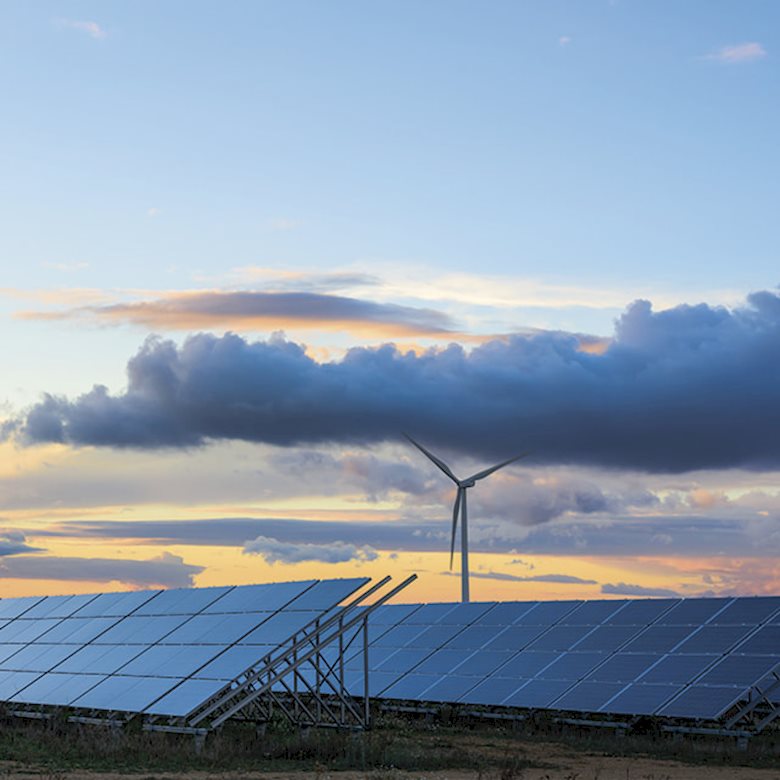Posted on Thursday, December 19, 2019 by Henrik Mørck Mogensen
The challenges of the energy business call for new partnerships
Proactively pursuing partnerships across the energy business is what will move us all towards a decarbonized future. While smart metering certainly plays a key role, the complexity of the challenge calls for an integrated rather than siloed approach.
Recent years have seen the dynamics on all levels of the energy system skyrocket, and today’s energy business is facing several highly complex challenges. Key drivers include an increasing share of renewables and decentralised production in the energy mix following the global shift towards decarbonisation as well as a rapidly growing power demand from the extensive electrification that also counts power-hungry electric vehicles, which are expected to account for 9% of the world’s total energy needs by 2050.
Each of these issues can be attacked from many different angles, but because they are so closely intertwined, tweaking individual levers to tackle them separately is not enough. With this level of complexity, thinking that one player alone holds the solution is naive at best, arrogant at worst. Multiple areas need to be addressed at the same time and, therefore, by multiple players.
And despite all the talk about new technical solutions, that is not what is lacking. Instead, the answer lies in new – and maybe untraditional – partnerships that can connect the abundance of dots in a way that not only meets the needs of the utilities but are also financially viable for all involved. Imagine that.
Smart meters provide the foundation
Smart metering is a key piece of the puzzle – but still just one piece. Due to their intelligence, number and strategically important location on the edge of the distribution grid, smart meters give utilities the data-based insight that is the basis for continuously optimising their operation, maintenance and planning of a more efficient grid. This is essential to ensuring better use of the electricity that is produced and maximising the benefit from the integration of renewable energy sources. However, knowing the challenges in terms of load and capacity in the grid is only the first step. So let’s explore three possible types of partnerships that can contribute to doing something about it.
+ Suppliers of grid infrastructure
Imagine if utilities had the equivalent of a cockpit with the complete overview of their transmission and distribution grid and how the different parts of it affect each other.
Combining the knowledge and data held by suppliers of grid infrastructure would create full transparency throughout the entire value chain allowing utilities to base their decisions on facts rather than estimations or theoretic models. This would enable them to react faster, target their efforts and prioritise the actions that generate the most value, not least in terms of renewables integration thanks to more accurate forecasts and evaluation.
Since we each deliver a part of the same value chain, the energy business as a whole could also benefit from closer collaboration between suppliers of smart metering solutions and of grid infrastructure components, such as transformer stations, SCADA systems, cables and other elements of the distribution and transmission grid.
+ Aggregators
With massive – and constantly increasing – electricity consumption, we are beginning to see bottlenecks leaving utilities unable to deliver the required effect fast enough even though production may be sufficient.
With the introduction of a new market structure that includes new players, roles and responsibilities, balancing power output and consumption necessitates partnerships with aggregators such as housing associations, suppliers of EV charging stations etc. because they are now closest to the consumers.
Future scenarios could include utilities introducing time-based tariffing and paying an aggregator to limit the power output for e.g. electric heating or charging of electric vehicles during certain hours. That said, regulators are still working on defining the exact frameworks at EU level.
+ Smart home suppliers
Consider the hoards of data in your pocket right now. We all carry a device that has detailed insight into our interests, preferences etc. If that could be combined with data about our energy consumption from smart meters, it might pave the way for a whole new type of smart home services.
Perhaps a subscription-based service could cover not only monitoring the energy use and performance of our household appliances but also the cost of fixing it when needed. Imagine never again having to defrost your freezer or spend even a minute wondering if its replacement is overdue? In addition to benefitting the individual consumer, this service would also contribute to reducing energy waste and evening out the overall consumption
.
Partnerships don’t just happen
Potential partnerships already exist on many different levels, and the future will no doubt bring with it ones that we cannot even envision today. But one thing they all have in common – imaginable or not – is that they will not emerge on their own. The complexity of today’s energy sector demands a more holistic view, and with that in mind, we believe that great innovation of the future will occur between market players even more so than within individual companies.


